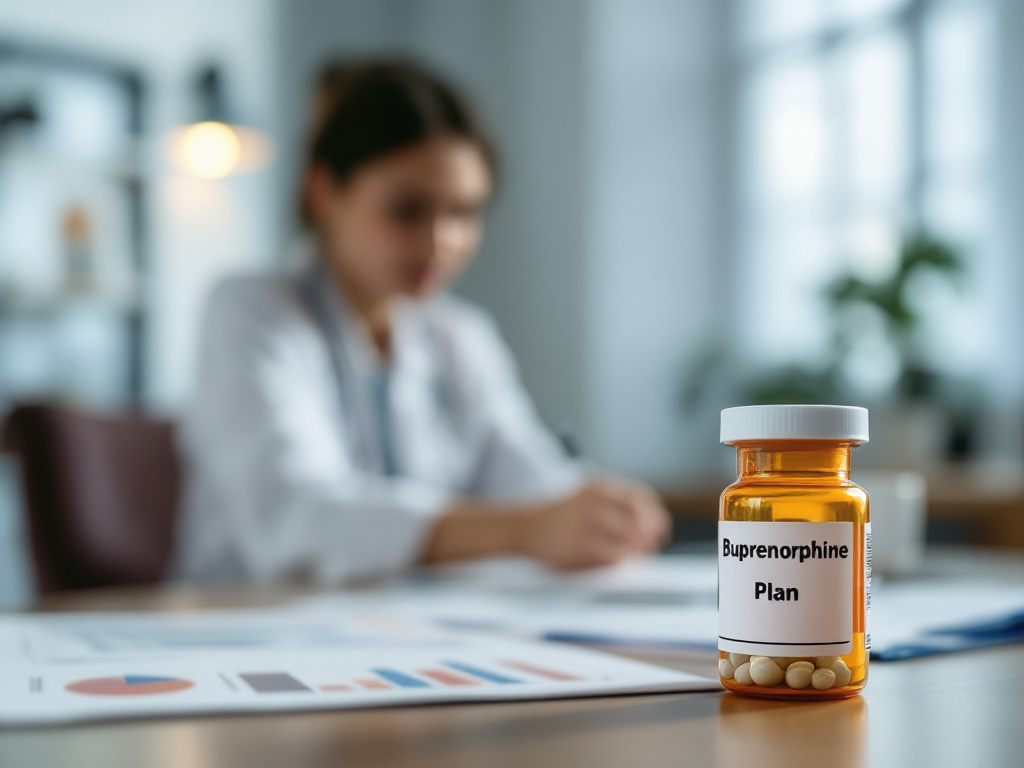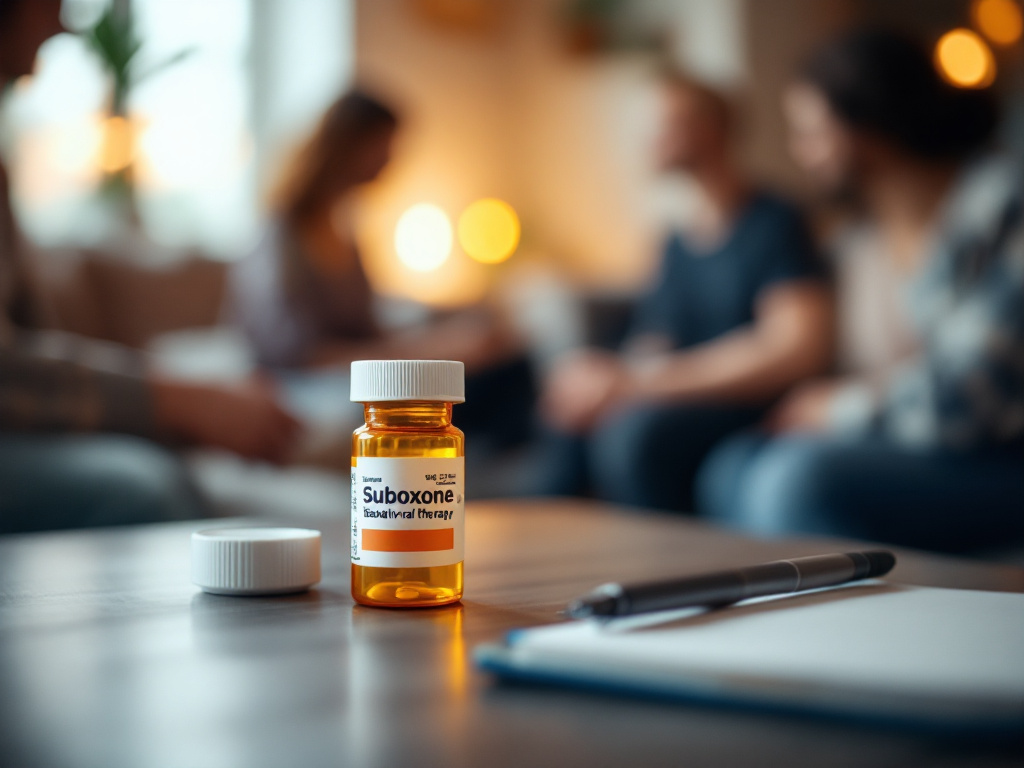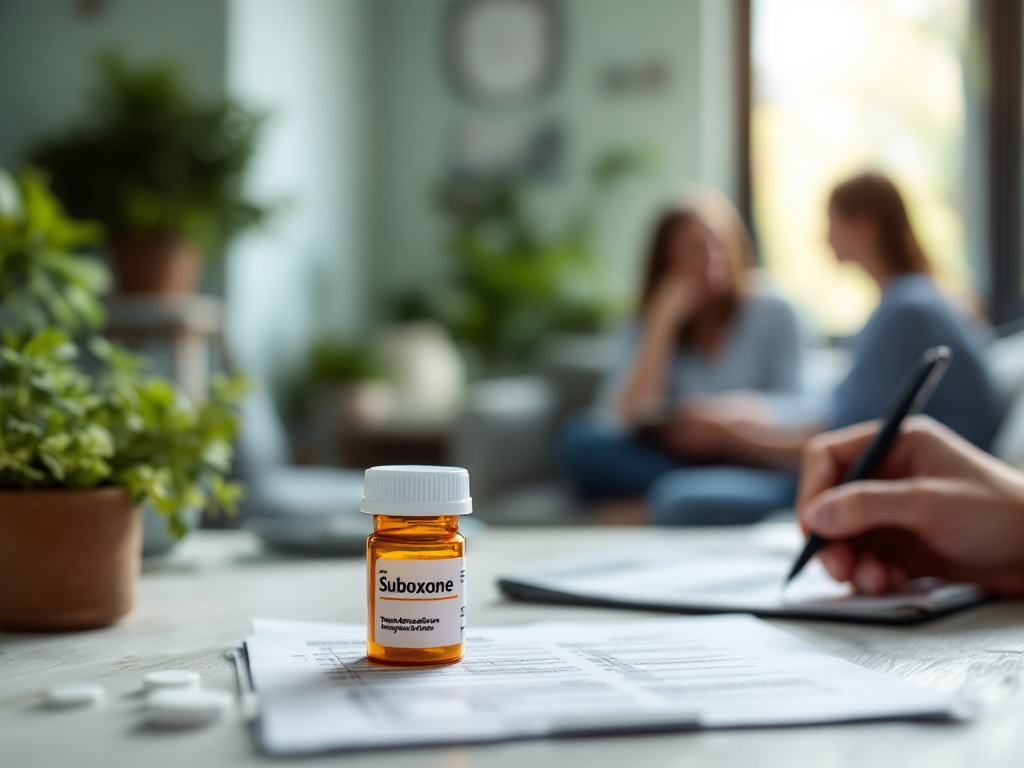When you begin your buprenorphine treatment plan setup, you take a crucial step toward managing opioid dependence with a structured, evidence-based approach. Buprenorphine has become a cornerstone of medication-assisted recovery, helping reduce withdrawal symptoms and curb cravings. In this guide, you’ll learn how to design and implement an outpatient plan that fits your needs, leverages insurance coverage, and integrates counseling and support services for lasting recovery.
Understand treatment fundamentals
What is buprenorphine
Buprenorphine is an opioid partial agonist prescribed to treat opioid use disorder (OUD) and, in some cases, severe pain. As one of three World Health Organization-recommended and FDA-approved medications for OUD—alongside methadone and naltrexone—it offers a safer profile than full agonists like heroin or methadone [1].
How it works
By binding to opioid receptors in the brain, buprenorphine blocks cravings and reduces withdrawal discomfort without producing the intense euphoria of full agonists. It interrupts pain signaling and helps stabilize your neurochemistry, making it easier to discontinue harmful opioid use [2].
Benefits of medication-assisted recovery
- Reduces overdose risk and mortality
- Improves retention in treatment [1]
- Supports gradual stabilization of daily life
- Lowers the likelihood of relapse when combined with counseling
For more on comprehensive care, explore our guide to buprenorphine therapy for opioid recovery.
Choose a healthcare provider
Criteria for selection
A qualified outpatient MAT provider will:
- Be licensed to prescribe buprenorphine under current DEA regulations
- Offer same-day or next-day appointments
- Provide integrated counseling and support services
You can find local options by searching for an outpatient addiction medicine provider or an outpatient mat clinic accepting insurance.
Insurance and coverage
Verify that your plan covers buprenorphine services before scheduling. Many insurers include MAT under behavioral health benefits. Check details for:
- Medication costs
- Number of allowed visits
- Telehealth coverage
If you need assistance, our team can guide you through buprenorphine treatment covered by insurance.
Prepare for induction
Medical evaluation
Before your first dose, you’ll complete:
- A physical exam and medical history review
- Laboratory testing to assess liver and kidney function
- Screening for co-occurring conditions
Your provider will develop an individualized plan based on these findings.
Withdrawal prerequisites
To avoid precipitated withdrawal, you must abstain from short-acting opioids for 12–24 hours and demonstrate early withdrawal signs (anxiety, muscle aches, sweating) before induction [3].
Initiate your induction phase
First dose guidelines
- Initial sublingual dose: 2 to 4 mg, followed by observation [4]
- Adjust incremental doses every 2 hours until withdrawal symptoms ease
Dosage form and dosing table
| Formulation | Initial dose | Titration interval |
|---|---|---|
| Sublingual tablets | 2 – 4 mg | Every 2 hours as needed |
| Buccal film | 75 µg once daily (opioid-naive) | Increase by 150 µg every 4 days [4] |
| Subdermal implant (≥ 16) | Single insertion in upper arm | N/A |
| Transdermal system | Per prescribing information | N/A |
Monitoring for withdrawal
Your provider will observe you for signs of precipitated withdrawal—agitation, severe nausea—or insufficient relief. Adjustments may include split dosing or gradual titration.
Common side effects
- Headache, nausea, constipation
- Drowsiness, dry mouth
Avoid alcohol or other sedatives to prevent respiratory depression and other risks [5].
Adjust dosage as needed
Tailoring dose over time
Once stabilized, your dose may be adjusted based on cravings, side effects, and lifestyle factors. Higher doses can improve retention and abstinence rates [1].
Addressing cravings and withdrawal
If cravings persist, your provider might:
- Increase daily dose
- Split dose into morning and evening administrations
- Transition to alternate-day dosing once stable [3]
Incorporate counseling and supports
Behavioral therapy integration
Medication is most effective when paired with counseling. Look for programs that offer a suboxone and behavioral therapy program to address underlying triggers and develop coping skills.
Support groups and peer recovery
Connecting with peers in recovery meetings or specialized groups builds accountability and reduces isolation. Consider both in-person and online options.
Establish long-term maintenance
Tapering strategies
Some patients aim to taper off buprenorphine under medical supervision. A suboxone taper and maintenance plan typically involves:
- Gradual dose reductions over weeks or months
- Regular check-ins to monitor withdrawal
- Supplemental counseling to reinforce coping strategies
Ongoing monitoring
Routine appointments help you:
- Track progress and mental health
- Address any emerging side effects
- Update treatment goals as you advance
For holistic planning, explore our suboxone recovery management plan.
Leverage telehealth and scheduling
Same-day appointment
If you’re ready to start now, you can book a same day buprenorphine appointment and complete your induction entirely via telehealth.
Virtual care options
Our virtual suboxone medication clinic ensures you receive expert guidance, prescription management, and psychological support from home.
By following these steps, you’ll create a comprehensive outpatient plan that maximizes the benefits of buprenorphine, combines counseling and peer support, and leverages insurance and telehealth for seamless access. Reach out today to schedule your first appointment and take charge of your recovery journey.
References
- (NCBI)
- (Healthdirect Australia)
- (SAMHSA)
- (Drugs.com)
- (NCBI)











